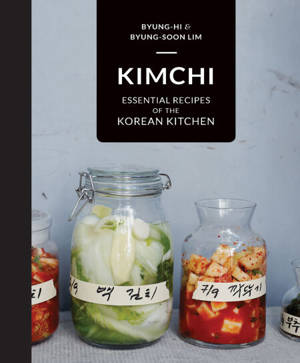
- Afhalen na 1 uur in een winkel met voorraad
- Gratis thuislevering in België vanaf € 30
- Ruim aanbod met 7 miljoen producten
- Afhalen na 1 uur in een winkel met voorraad
- Gratis thuislevering in België vanaf € 30
- Ruim aanbod met 7 miljoen producten
Zoeken
Omschrijving
You can’t really imagine Korea without kimchi. For thousands of years, their fermented vegetables have been absolutely essential at meals. In Korea, kimchi is so much more than food – it is a national cultural treasure, a universal health food and a part of the Korean identity.
Koreans are obsessed with good food, and the Lim family is no exception. For two generations, they have retained the proud tradition of kimchi at the Arirang Resturant in Stockholm. This book contains the family’s most popular recipes – common, as well as rarer, kimchi recipes, Korean everyday food and the ever recurring bi-bim-bap (which literally means ‘mixed rice’).
The Lim family present their version of a classic with lettuce, cabbage, chilli and ginger, but also the popular radish kimchi, kattugi, as well as the more unusual varieties with pumpkin, oysters, mushrooms, roots and other vegetables. Sourish, hot and tasty, kimchi is a wonderful accessory for most meals, not only Asian-style dishes but every imaginable Western dish.
Here are ‘insider’ tips on how to go about fermenting vegetables at home. Considering it is so incredibly simple, the result is amazing, beautiful, tasty and healthy, thanks to the built-in riches of good bacteria cultures found in vegetables.
Koreans are obsessed with good food, and the Lim family is no exception. For two generations, they have retained the proud tradition of kimchi at the Arirang Resturant in Stockholm. This book contains the family’s most popular recipes – common, as well as rarer, kimchi recipes, Korean everyday food and the ever recurring bi-bim-bap (which literally means ‘mixed rice’).
The Lim family present their version of a classic with lettuce, cabbage, chilli and ginger, but also the popular radish kimchi, kattugi, as well as the more unusual varieties with pumpkin, oysters, mushrooms, roots and other vegetables. Sourish, hot and tasty, kimchi is a wonderful accessory for most meals, not only Asian-style dishes but every imaginable Western dish.
Here are ‘insider’ tips on how to go about fermenting vegetables at home. Considering it is so incredibly simple, the result is amazing, beautiful, tasty and healthy, thanks to the built-in riches of good bacteria cultures found in vegetables.
Specificaties
Betrokkenen
- Auteur(s):
- Uitgeverij:
Inhoud
- Aantal bladzijden:
- 144
- Taal:
- Engels
Eigenschappen
- Productcode (EAN):
- 9781910496244
- Verschijningsdatum:
- 7/12/2014
- Uitvoering:
- E-book
- Beveiligd met:
- Adobe DRM
- Formaat:
- ePub

Alleen bij Standaard Boekhandel
+ 6 punten op je klantenkaart van Standaard Boekhandel
Beoordelingen
We publiceren alleen reviews die voldoen aan de voorwaarden voor reviews. Bekijk onze voorwaarden voor reviews.











